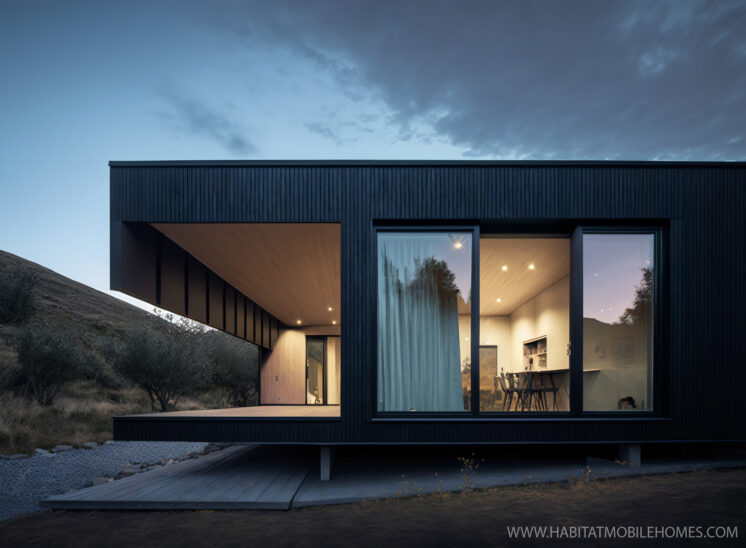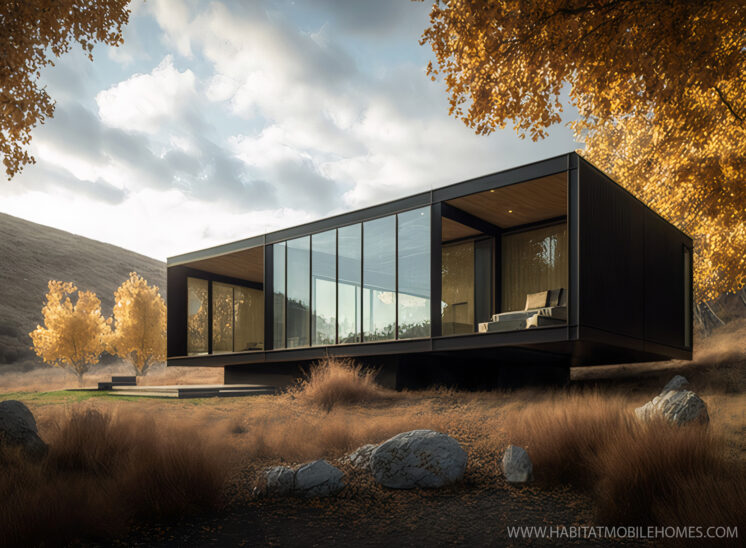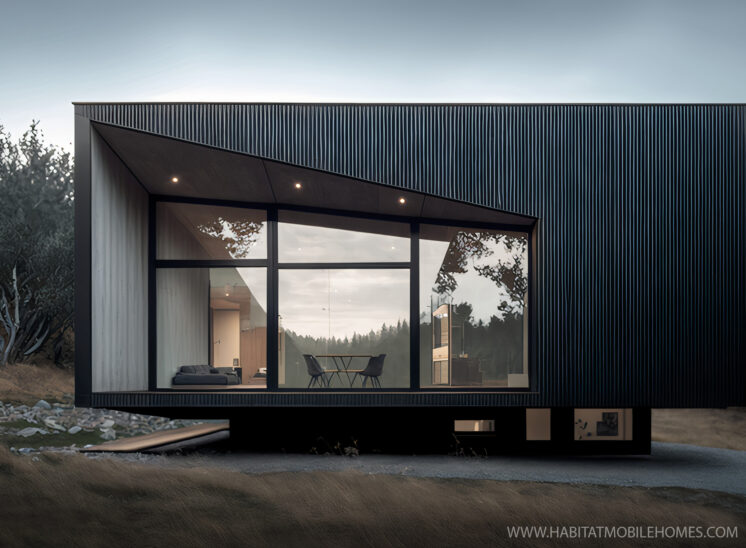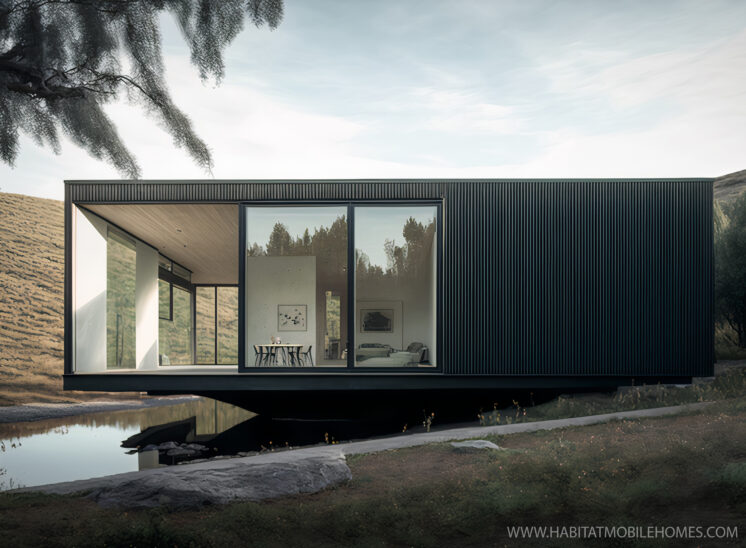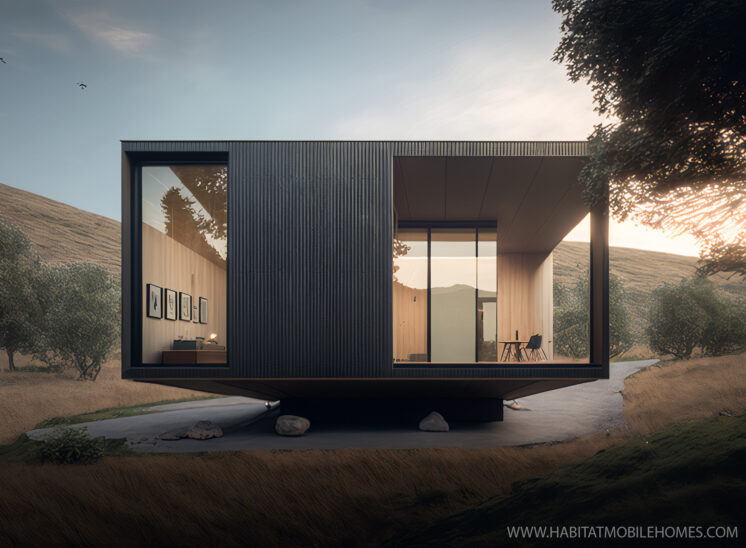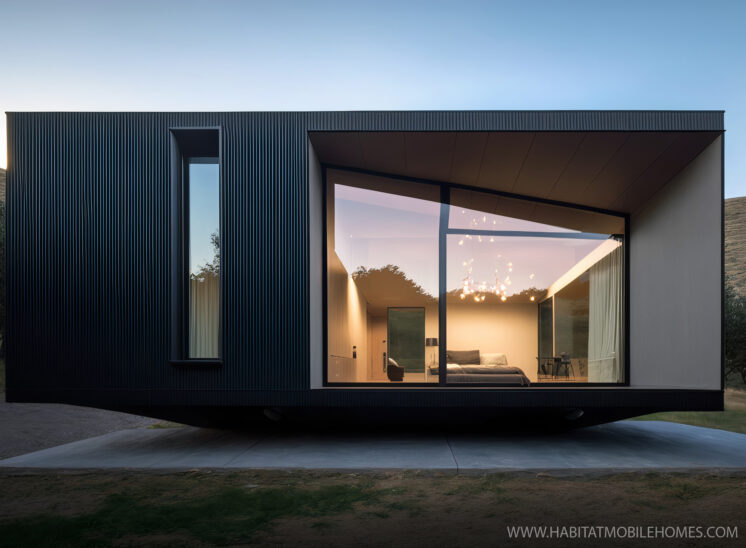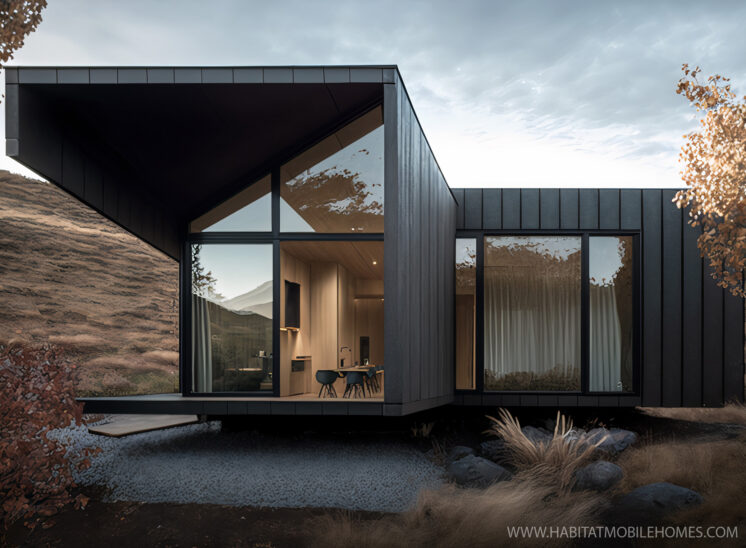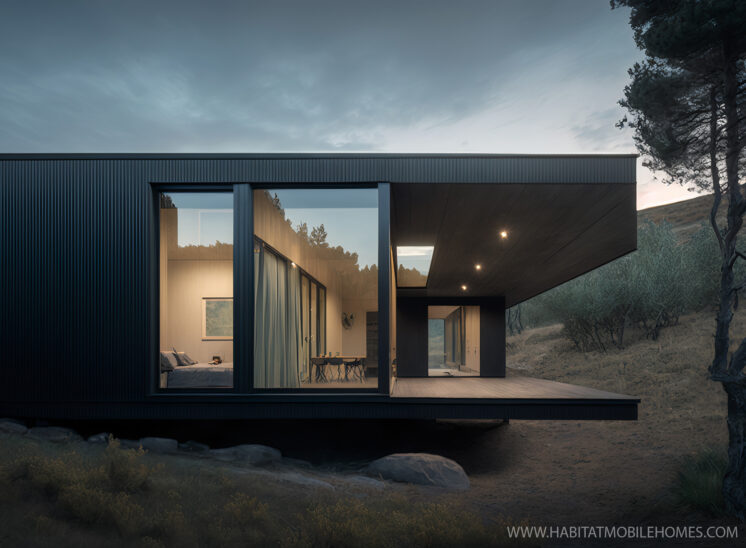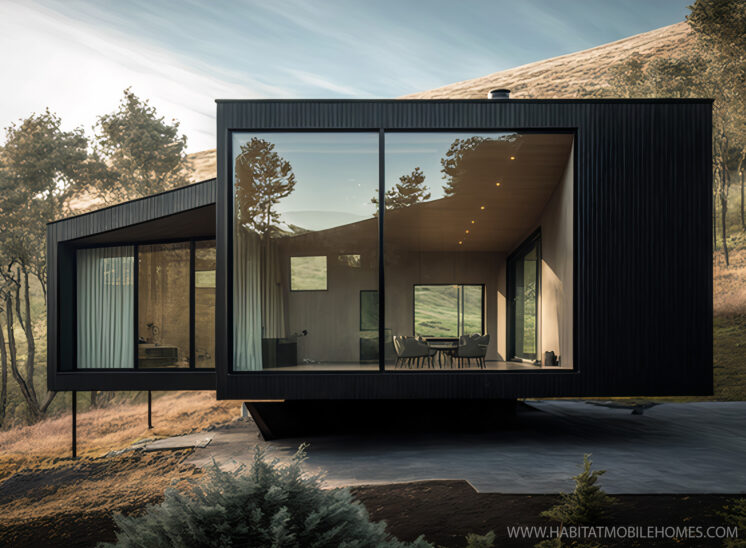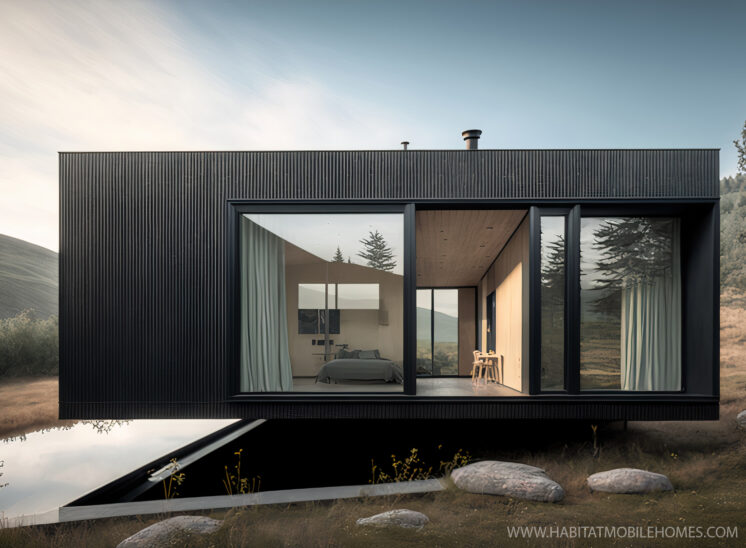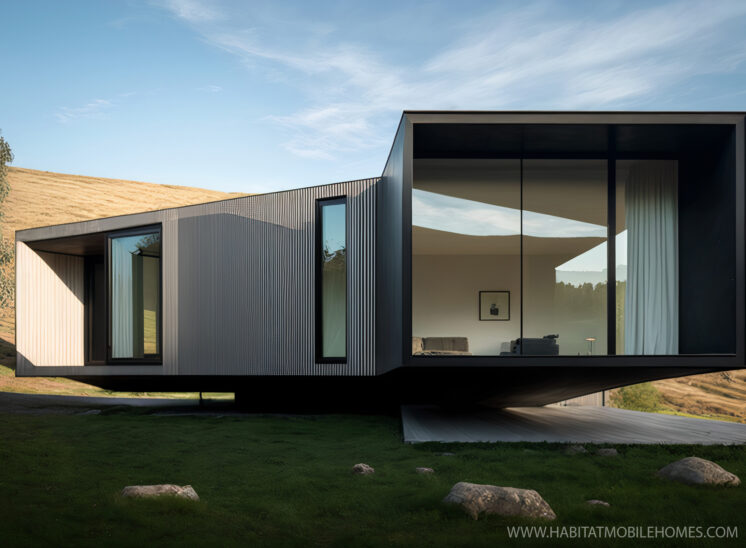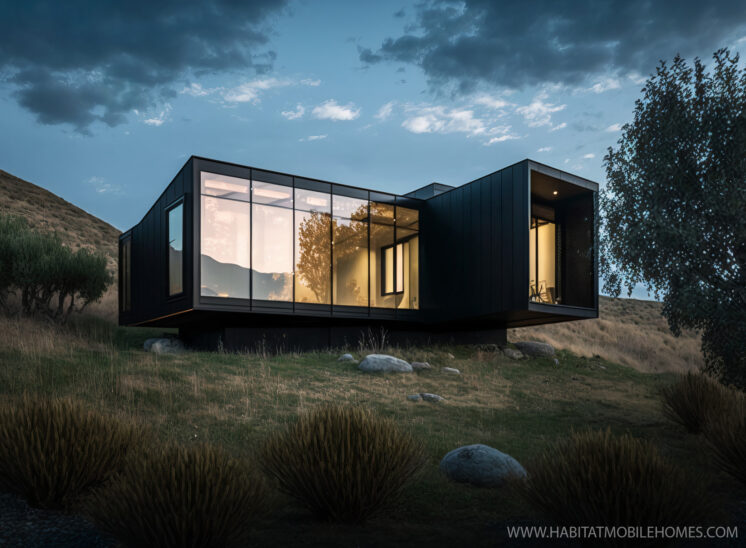The Highlands Retreat Studio: A Room with a View!
Have you ever dreamed of living in the Highland of Scotland? Well, now you can make that dream a reality thanks to the new range of twin-unit mobile homes and timber frame buildings called ‘Highlands Retreat Studio’. This state-of-the-art building design features a flat or mono pitch roof, is clad with locally sourced slim profile timber, and includes an extra-sized sliding door and bi-folding glass. It’s perfect for those who want to enjoy the breathtaking views of the rural Highland from the comfort of their own home.
The most eye-catching element of this beautiful building
The most eye-catching element of this beautiful building is its large windows that offer picturesque views of the surrounding countryside. The extra sized sliding door and bi-folding glass panels create amazing panoramic vistas from inside – whether you’re sitting in your living room or cooking dinner in your kitchen. Plus, if you opt for a mono pitch roof, then you can enjoy even more natural light streaming into your home during the day.
The beauty of this building doesn’t just come from its stunning views; it also comes from its high quality materials which are designed to withstand all kinds of weather conditions throughout Scotland. The slim profile timber cladding is locally sourced in the Highlands, so not only will it look beautiful and last for years but it will also help support local businesses in the area.
Another great feature of this building is its adaptability; it can be customized to fit any kind of property size or shape, making it ideal for those looking for a complete home transformation without having to completely rebuild their existing structure. Whether you have a small garden patch or an entire estate, this building will provide you with exactly what you need to make your dream home come true!
If you’ve been dreaming about retreating to a Highland paradise but haven’t been able to find the perfect way to do so, then look no further than Highlands Retreat Studio! Its stunning views and high quality materials make this building an ideal choice for anyone looking for an escape from their everyday life – after all, who wouldn’t want amazing panoramic vistas as part of their morning cup of coffee? And with its adaptability and locally sourced materials, this building is sure to provide years worth of comfort and relaxation – all while supporting local businesses in Scotland too! What more could one ask for? So why wait any longer? Make your dreams come true today by investing in a Highlands Retreat Studio!
What is the 4 year rule for static caravans?
The 4-year rule for static caravans is an important consideration for those looking to place a static caravan on their land. This rule is a legal principle that affects the enforcement of planning regulations and the use of land for certain purposes. Here, we'll explore what the 4-year rule means for static caravans and how it can impact the use of these structures on your land.
In the UK, planning permission is required for the placement of static caravans on land. However, there are situations where landowners may place a static caravan on their land without planning permission. This may occur if the caravan is intended for temporary use, such as during the construction of a permanent dwelling.
The 4-year rule for static caravans comes into play when there has been a breach of planning control. If a static caravan has been placed on land without planning permission, but no enforcement action is taken against it for a period of 4 years, the local council may be unable to take enforcement action against it in the future. This means that the caravan may be able to remain on the land even if it does not have planning permission.
It's important to note that the 4-year rule only applies to certain types of breach of planning control, specifically building operations. It does not apply to other types of breach of planning control, such as changes of use or breaches of conditions attached to planning permission.
If you're considering placing a static caravan on your land, it's important to obtain planning permission beforehand. This will ensure that your use of the land is lawful and that you don't run into problems with the local council in the future. If you've already placed a static caravan on your land without planning permission, you should seek legal advice to understand your options and any potential risks involved.
In conclusion, the 4-year rule for static caravans is an important consideration for landowners looking to place these structures on their land. It's important to obtain planning permission beforehand to avoid any potential enforcement action by the local council. If you've already placed a static caravan on your land without planning permission, it's important to seek legal advice to understand your options and any potential risks involved.
If you're considering placing a static caravan on your land in the UK, it's important to be aware of the 4-year rule. This rule relates to the enforcement of planning regulations and the use of land for certain purposes. In this article, we'll explain what the 4-year rule means for static caravans and how it can impact your use of these structures.
Essentially, the 4-year rule for static caravans is a legal principle outlined in the Town and Country Planning Act 1990. It states that if there has been a breach of planning control involving building operations, no enforcement action may be taken after four years. This means that if you have placed a static caravan on your land without obtaining planning permission, but no action is taken against it for four years, it may be able to remain on the land without any enforcement action being taken in the future.
It's important to note that the 4-year rule only applies to building operations and does not cover other types of planning control breaches, such as changes of use or breaches of planning permission conditions. If you're considering placing a static caravan on your land, it's always best to obtain planning permission beforehand to ensure that your use of the land is lawful.
If you have already placed a static caravan on your land without planning permission, it's important to seek legal advice. Depending on your situation, there may be options available to you, but there may also be risks involved in leaving the caravan in place without permission.
In summary, the 4-year rule for static caravans is an important consideration for those looking to place these structures on their land. While it may be possible to avoid enforcement action if a caravan has been in place for four years without planning permission, it's always best to obtain permission beforehand to ensure that your use of the land is lawful and avoid any potential issues with the local council in the future.
What is the 10 year rule mobile home?
If you're considering placing a mobile home on your land in the UK, it's important to be aware of the 10-year rule. This rule relates to the enforcement of planning regulations and the use of land for certain purposes. In this article, we'll explain what the 10-year rule means for mobile homes and how it can impact your use of these structures.
The 10-year rule for mobile homes is a legal principle outlined in the Town and Country Planning Act 1990. It states that if there has been a breach of planning control involving the use of land or buildings (excluding dwellings), and no enforcement action has been taken for at least ten years, then the use of the land or building may become immune from enforcement action in the future.
It's important to note that the 10-year rule only applies to breaches of use, and does not cover other types of planning control breaches, such as changes of use or breaches of planning permission conditions. Additionally, the 10-year rule only applies to land or buildings that are not classified as dwellings. Dwellings are covered by the 4-year rule, which we explained in a previous article.
If you're considering placing a mobile home on your land, it's always best to obtain planning permission beforehand to ensure that your use of the land is lawful. However, if you have already placed a mobile home on your land without planning permission, and no enforcement action has been taken against it for at least ten years, it may become immune from future enforcement action.
It's important to note that the 10-year rule does not provide a guarantee that a mobile home will be allowed to remain in place without planning permission. The rule simply means that if no enforcement action has been taken for at least ten years, it may be more difficult for the local council to take action against the use of the land or building in the future.
In summary, the 10-year rule for mobile homes is an important consideration for those looking to place these structures on their land. While it may be possible to avoid enforcement action if a mobile home has been in place for at least ten years without planning permission, it's always best to obtain permission beforehand to ensure that your use of the land is lawful and avoid any potential issues with the local council in the future.
Navigating the 10-Year Rule for Mobile Homes in the UK
If you're planning on placing a mobile home on your land in the UK, it's crucial to understand the 10-year rule and how it can impact your use of the structure. This legal principle relates to the enforcement of planning regulations and can provide immunity from enforcement action in certain circumstances. In this article, we'll explore the 10-year rule in detail and provide guidance on how to navigate it when using a mobile home on your land.
The 10-year rule is outlined in the Town and Country Planning Act 1990 and applies to breaches of planning control involving the use of land or buildings (excluding dwellings). If no enforcement action has been taken against the breach for at least ten years, the use of the land or building may become immune from enforcement action in the future.
It's essential to note that the 10-year rule only covers breaches of use and doesn't apply to other types of planning control breaches, such as changes of use or breaches of planning permission conditions. Additionally, the rule only applies to land or buildings that are not classified as dwellings. Dwellings are covered by the 4-year rule, which we discussed in a previous article.
If you're planning to use a mobile home on your land, it's advisable to obtain planning permission before doing so. However, if you've already placed a mobile home on your land without permission, and no enforcement action has been taken against it for at least ten years, it may become immune from future enforcement action.
It's important to note that the 10-year rule doesn't guarantee that a mobile home can remain in place without planning permission. It merely means that if no enforcement action has been taken for at least ten years, it's more challenging for the local council to take action against the use of the land or building in the future.
In conclusion, understanding the 10-year rule is essential when placing a mobile home on your land in the UK. While it's possible to avoid enforcement action if a mobile home has been in place for at least ten years without permission, obtaining permission beforehand is always the best approach. By doing so, you can ensure that your use of the land is lawful and avoid any potential issues with the local council in the future.

